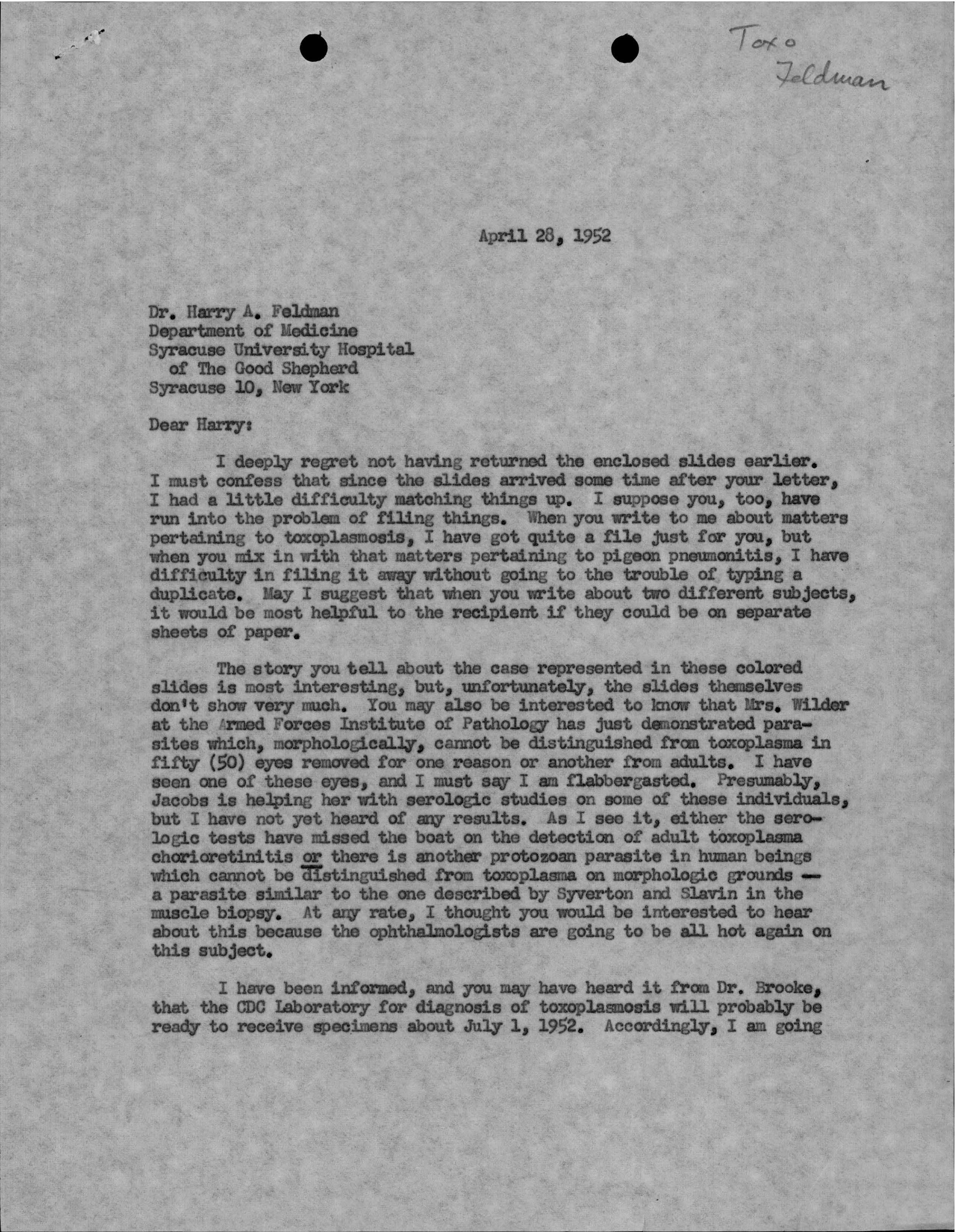Yesterday, my colleague Laura Laugle and I were discussing how to arrange archival collections, which reminded me of a letter (seen below) that I recently came across during the redaction process. I wanted to share this letter since I thought other archivists reading the blog would also appreciate it.
First, a little bit of explanation – one important task that archivists perform when they are processing a collection is referred to as “arrangement.” According to A Glossary of Archival and Records Terminology by Richard Pearce-Moses, arrangement is “the process of organizing materials with respect to their provenance and original order, to protect their context and to achieve physical or intellectual control over the materials.”[1] I realize that definition contains a lot of archival jargon, such as “provenance” and “original order.” Provenance, according to the same glossary, essentially refers to the person or organization that created the collection of materials.[2] Original order is the “organization and sequence of records established by the creator of the records,” which hopefully provides perspective into how the record creator used the materials.[3]
Why am I discussing these terms here? The letter from Dr. Sabin to his colleague Dr. Harry Feldman (who is mentioned last week’s blog post “The Sabin-Feldman Dye Test”) gives insight into how Dr. Sabin originally arranged his papers. Before discussing a toxoplasmosis case, Dr. Sabin discusses his filing “problem.” He wrote:
I suppose you, too, have run into the problem of filing things. When you write to me about matters pertaining to toxoplasmosis, I have got quite a file just for you, but when you mix in with that matters pertaining to pigeon pneumonitis, I have difficulty in filing it away without going to the trouble of typing a duplicate. May I suggest that when you write about two different subjects, it would be most helpful to the recipient if they could be on separate sheets of paper.[4]
Honestly, I don’t know how often archivists come across letters that describe the record creator’s thought process behind the original organization of the materials. But to the archivists in the Winkler Center, reading Dr. Sabin’s request was a great way to see how his mind worked!
Although not all of the materials came to the Hauck Center for the Albert B. Sabin Archives in an organized fashion, letters such as this provided the original Sabin archivist Maggie Heran some context as to how she could arrange Dr. Sabin’s materials. For example, in the original “Scope and Content Note” for the Military Series, Ms. Heran noted that a sub-series called “Source Material” was created because of an excerpt from a 1943 letter from Dr. Sabin to Dr. John R. Paul, where he wrote, “I have had a number of essential papers on sandfly fever and epidemic hepatitis either copied on the typewriter or photostated.”[5]
It was due to Ms. Heran’s hard work that the collection and the original inventory are arranged so well. Once the digitized materials are available online, we plan to add links within the EAD compatible finding aid so users can access materials from the series, sub-series, box and folder level. It’s an ambitious plan, but hopefully one that will make our materials even easier for researchers to find and use!
References
[1] Richard Pearce-Moses, “Arrangement,” A Glossary of Archival and Records Terminology.
[2] Richard Pearce-Moses, “Provenance,” A Glossary of Archival and Records Terminology.
[3] Richard Pearce-Moses, “Original Order,” A Glossary of Archival and Records Terminology.
[4] Letter from Dr. Sabin to Dr. Feldman, April 28, 1952. Found in Series #8 “Other Diseases Researched,” Sub-Series “Toxoplasmosis,” Box #2, Folder #7 – Feldman, Harry A. – 1952.
[5] Quoted from the original “Scope and Content Note.”
In 2010, the University of Cincinnati Libraries received a $314,258 grant from the National Endowment for the Humanities (NEH) to digitize the correspondence and photographs of Dr. Albert B. Sabin. This digitization project has been designated a NEH “We the People” project, an initiative to encourage and strengthen the teaching, study, and understanding of American history and culture through the support of projects that explore significant events and themes in our nation’s history and culture and that advance knowledge of the principles that define America. Any views, findings, conclusions, or recommendations expressed in this blog do not necessarily reflect those of the National Endowment for the Humanities.

